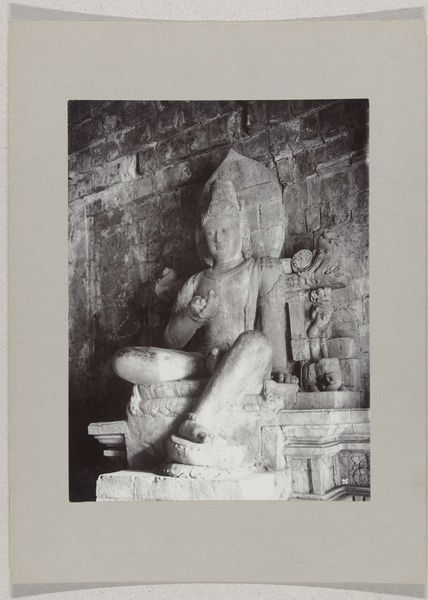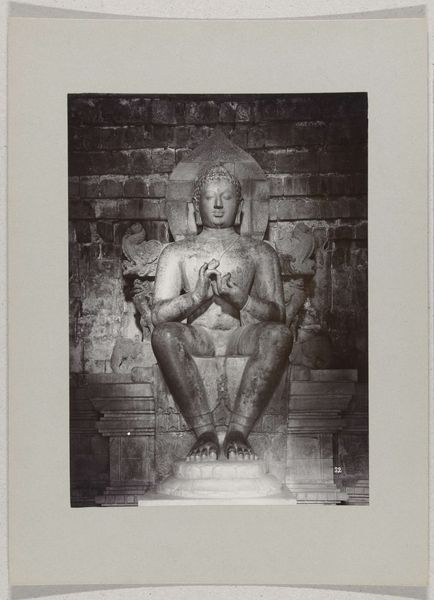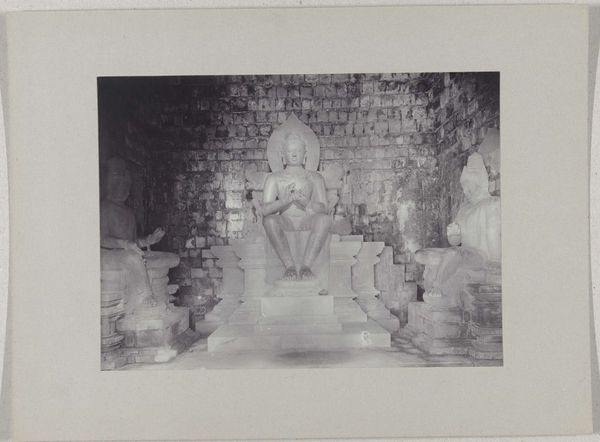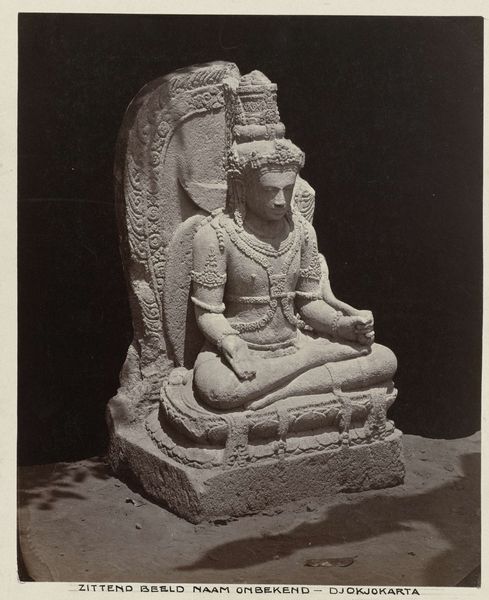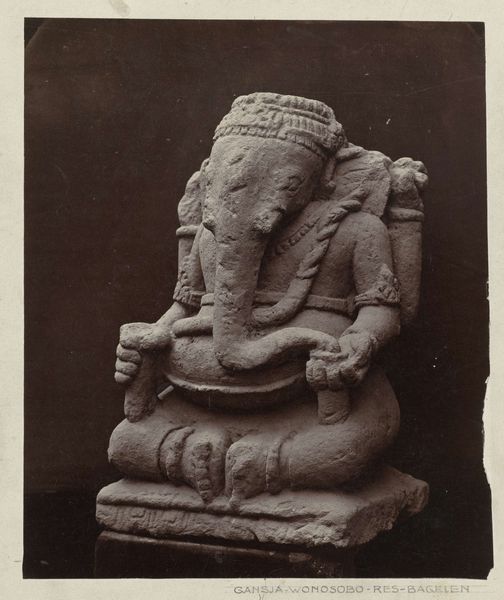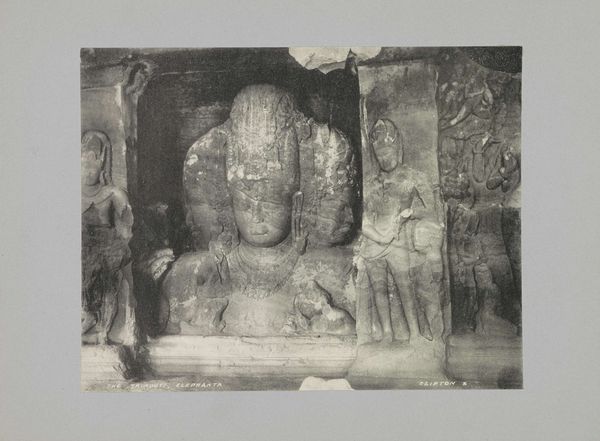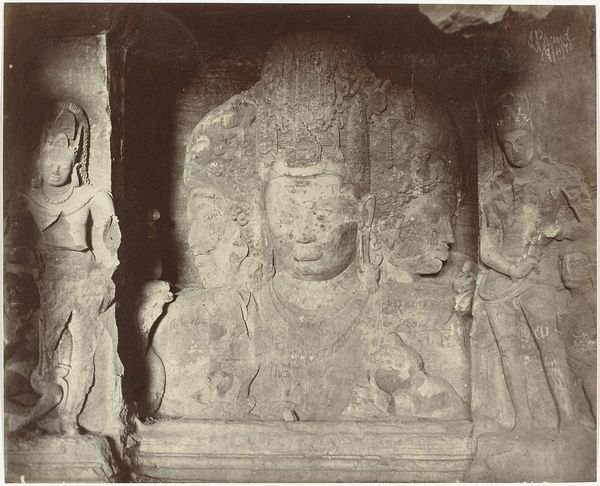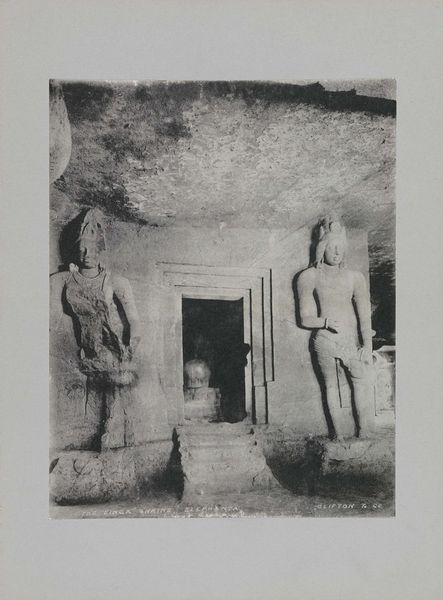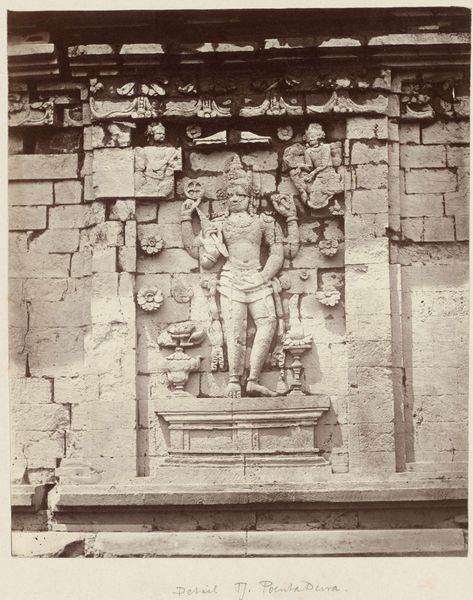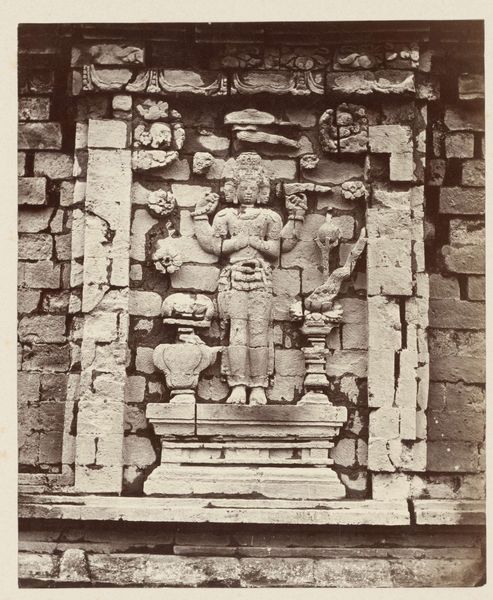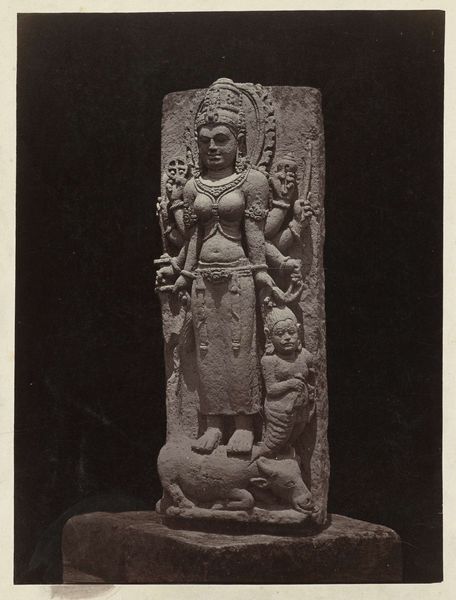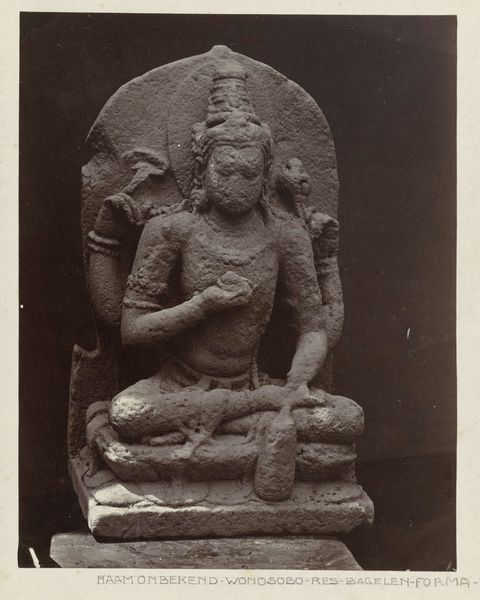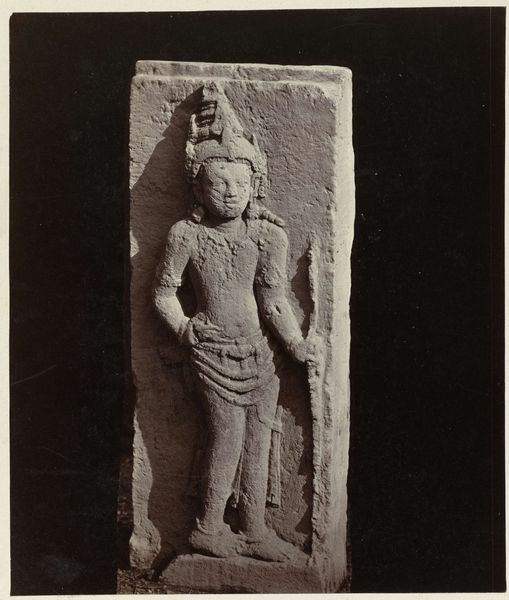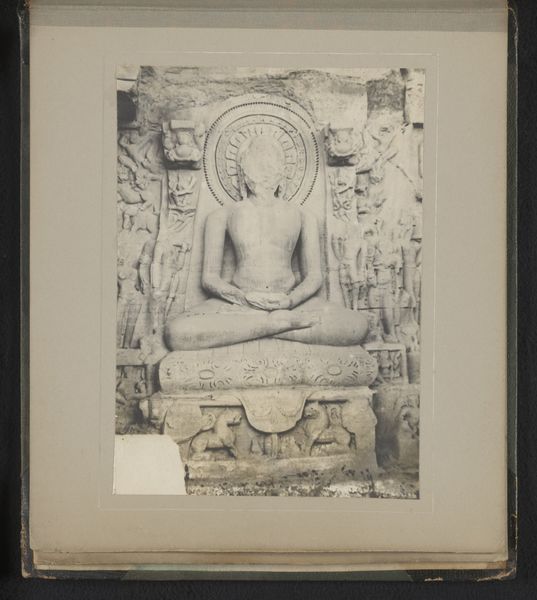
Beeld van een van de twee koningszonen in de Tempel Mendoet ten zuiden van Magelang, Nederlands-Indië c. 1895 - 1915
0:00
0:00
print, bronze, photography, sculpture
#
portrait
# print
#
asian-art
#
classical-realism
#
bronze
#
figuration
#
photography
#
sculpture
Dimensions: height 237 mm, width 174 mm, height 243 mm, width 329 mm
Copyright: Rijks Museum: Open Domain
Editor: Here we have a photograph by Onnes Kurkdjian, taken sometime between 1895 and 1915. It depicts a sculpture from the Mendoet Temple in Java. The photo itself feels very formal and documentary in style. What can you tell me about the historical context here? Curator: The image speaks volumes about the colonial gaze and the early documentation of Southeast Asian art. The Dutch East Indies, now Indonesia, was a hotbed for archaeological exploration and documentation at this time, fueled by both scientific curiosity and colonial power dynamics. What do you make of that dynamic here, visible in the image itself? Editor: It makes me think about how Western audiences were being presented with these images and what the intention was behind presenting them. It feels like there's an element of, "look what we found," framing these statues as artifacts rather than parts of a living culture. Curator: Precisely. And it's crucial to remember the role of photography in shaping public perceptions of colonized regions. This image would have circulated in albums and ethnographic surveys, contributing to the construction of a visual archive. How does the composition of the photograph impact that, would you say? Editor: I think by presenting the statue so starkly, in this very high contrast black and white, the focus is drawn to its “otherness” or exotic appeal for Western audiences, especially when removed from its temple context.. It makes it feel like it's being put on display almost. Curator: Exactly, that tension between appreciation and objectification is ever-present in colonial era depictions. Looking at it now, we can examine how cultural heritage gets recontextualized, often problematically, through such photographic representations. Food for thought. Editor: Absolutely. It's a powerful reminder to critically examine the lenses through which we view art and history. I definitely learned a lot from that point of view. Curator: Agreed. Analyzing art through the lens of colonial history gives us valuable perspective, hopefully preventing those biases in the future.
Comments
No comments
Be the first to comment and join the conversation on the ultimate creative platform.
